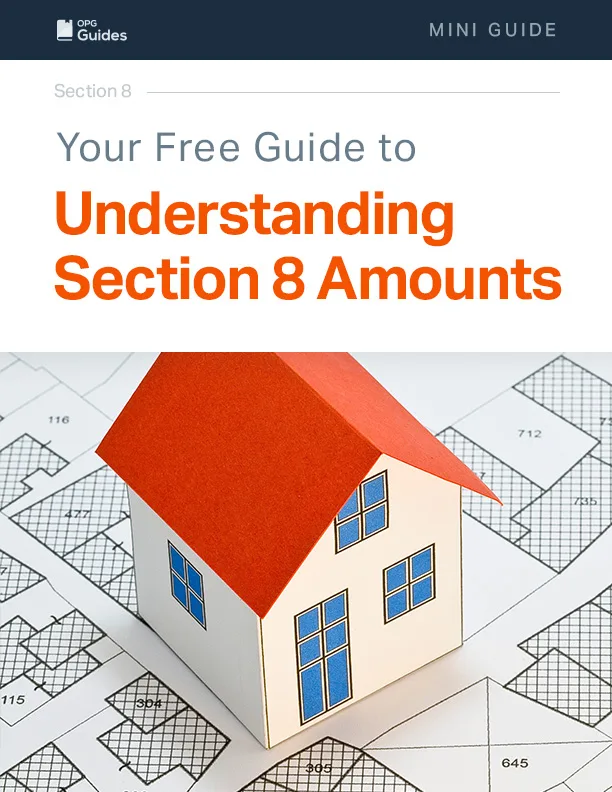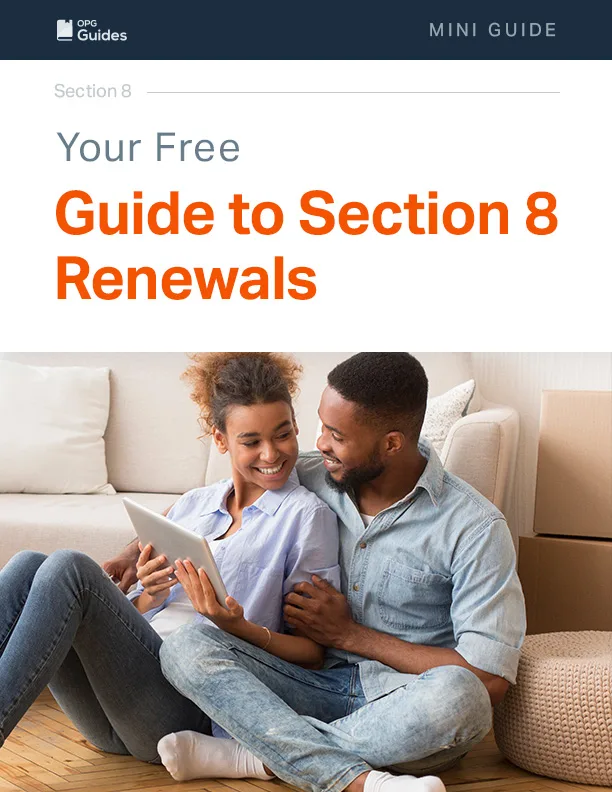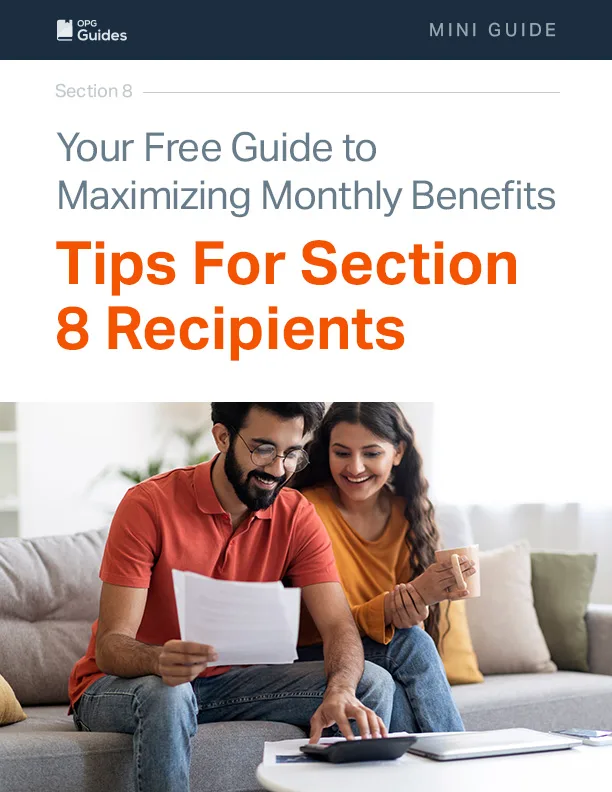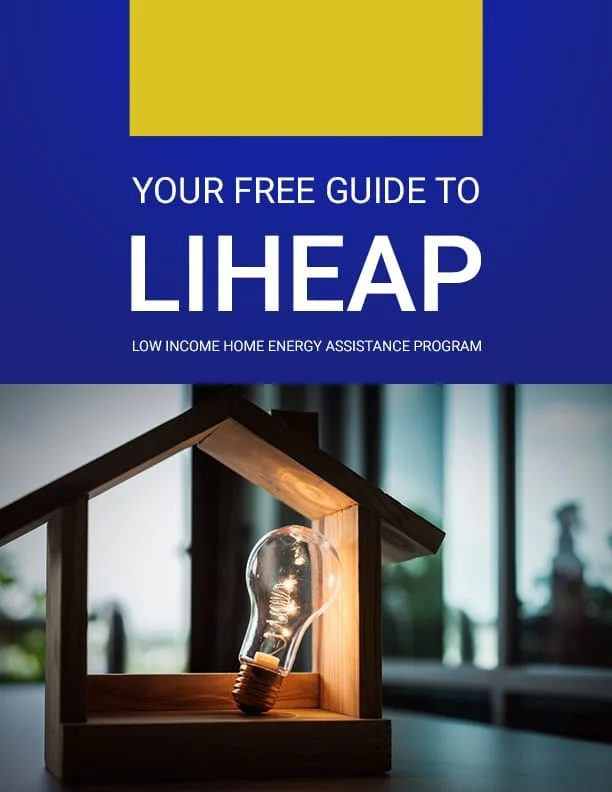Your Free Guide to Rent-to-Own Homes
Your Free Guide to Rent-to-Own Homes
We are privately owned and not affiliated with the government in any way or form.

What Is Rent-to-Own?
Renting-to-own is a stepped approach, where prospective homeowners find a home they would like to own. Instead of buying it right away, they enter into an agreement with the owner where they rent it for a period of time before buying it. Rent-to-own gives people who want to buy a home but are not yet financially ready the chance to do so.
How Rent-to-Own Works
A rent-to-own agreement has the following components:
- Purchase price
- Option fee
- Rent + Premium
Purchase Price
The purchase price is the price you will pay at the end of the lease period if you exercise your option to buy the property. The agreement may include an agreed upon purchase price, although in some agreements, the price will be set at the end of the agreement.
The agreement will also detail how long you will be renting the property, usually 1–3 years, and how much you will pay per month while you are renting. Monthly rent payments are usually higher than comparable traditional rent payments, because a portion of your monthly rent payment will go toward the final purchase price.
At the end of the lease period, you decide if you want to purchase the property. However, if you have a lease-purchase agreement, you could be obligated to buy the property at the end of the lease period. See the section called Types of Rent to Own Contracts for a comparison of lease option agreements and lease-purchase agreements.
Option Fee
In a rent-to-own program, you will pay an up-front, non-refundable fee called the option fee. There is no set amount for this fee, so it is negotiable. However, it usually falls between 1% and 5% of the purchase price.
Paying this up-front fee gives you the option of buying the home at the end of the lease term, and prevents the owner from selling it to anybody else during the lease term. In most contracts, the option fee is applied to the purchase price at the end of the lease term.
Rent + Premium
Like in a traditional lease, the amount of the monthly rent is specified in the contract. In a rent-to-own agreement, the rent will generally be more than comparable rents in the area. This is because a portion of the monthly rental fee, called the premium — which is usually between 25% and 50% — will go toward reducing the selling price once the lease period is over. In other words, the premium payments act as pre-payments for the final selling price, so if you do purchase the home at the end of the agreement, the premium payments you have already paid are subtracted from the final purchase amount.
Here is an example:
- Purchase price = $120,000
Option fee = $2,400
Rent = $1,500 per month
Premium = 25%
Lease term = 2 years - Total rent paid in 2 years = $36,000 ($1,500 x 24 months)
Portion of the total rent that is a premium = $9,000 (25% of $36,000) - Down payment needed (20% of purchase price) = $24,000
Minus the $2,400 option fee and the $9,000 premium you already paid, the remaining amount required for the down payment is $12,600 - Remaining amount to finance = $96,000
OR with a 10% down payment - Down payment needed (10% of purchase price) = $12,000
Minus the $2,400 option fee and the $9,000 premium you already pay, the remaining amount required for the down payment is $600 - Remaining amount to finance = $108,000
Is Rent-to-Own Right For You?

There are many factors to consider before entering into a rent-to-own agreement. Mainly, there are additional financial commitments compared to a traditional lease.
Pros
Rent-to-own programs can be beneficial to buyers who may not be able to buy outright but who are improving their finances. Rent-to-own agreements are different depending on what the buyer and seller agree to. If the buyer and seller negotiate their own terms, some benefits of renting-to-own may be:
- Time to save up a down payment – When buying a home, you will typically need to pay a down payment of at least 10% of the purchase price. If you do not have that amount saved, a rent-to-own program gives you time to save up. You don’t have to pay the down payment until you are closing on the purchase.
- Time to improve your credit – In order to qualify for a conventional mortgage, you will usually need to have a credit score of at least 620. With a rent-to-own agreement, you can use the lease term to build and repair your credit. See the section called Improve Your Credit for more information on improving your credit.
- Lock in your purchase price – If home values in the neighborhood are increasing, a rent-to-own agreement may help you set the purchase price at the current, lower value, while delaying the actual purchase for a few years.
- Build equity – A portion of the rent you pay each month during the lease period will go toward the purchase price. In addition, if you have negotiated it, the option money you paid at the beginning will be applied to the purchase price, increasing your equity and reducing the additional money you need for your down payment.
- Try before you buy – By living in the home before you buy it, you get to know the home, neighbors and area to make sure that you want to live there for the long term.
- Reduce moving costs – You will only have to move once instead of twice if you decide to stay, reducing the cost and the upheaval of multiple moves.
Cons
Some of the considerations listed below can be mitigated ahead of time by negotiating the contract and doing due diligence. See the section called Negotiating Your Contract to learn more about negotiating the contract and Due Diligence for a list of due diligence tips before you negotiate the contract.
- Loss of money – If things do not go as planned and you end up not buying the home, you would forfeit the option fee and the premium (the extra money paid each month toward the purchase price). In the example above, if you do not buy the home at the end of the two years, you will have forfeited the option fee ($2,400) and the premium ($9,000) for a total of $11,400, in addition to your regular rent payments.
- Less control – During the lease term, you do not yet own the property so you do not have full control of it. The owner could default on the mortgage payment and lose the property in foreclosure, or fail to pay property tax or contractors and have liens filed against the property. Any of these could also result in you losing the house, ending the lease period early, and losing the option fee and premiums paid, unless you also decide to pay off the liens in addition to the purchase price of the house. The owner also is responsible for major maintenance on the property, which may not be done to your liking.
- Falling home value – If property values in the area fall instead of increase, you will face the choice of paying more than the home is worth at the time or forfeiting the option fee and additional monthly payment amounts.
- Consequence of late payments – Your contract may say that if you pay your rent late, you lose your option to buy the property. Alternatively, some contracts will specify that for each late payment, the premium paid will not be applied to the purchase price.
- Problems with the home – You may find out that there are problems with the home, either with the physical structure, the neighborhood or the title to the home. In this case, you have the choice of going ahead with the purchase regardless of the problems or forfeiting the option fee and accumulated premium.
Who is a rent-to-own candidate?
Rent-to-own may be right if someone wants to buy a home, but does not quite have a sufficient credit score or down payment to do so and can afford to pay both the option fee and rent at slightly above market rates.
Rent-to-own may be a good option when you:
- Have just gotten a better paying job.
- Are planning on getting added income (by getting married or getting a year-end bonus, for example).
- Only need a little time to add to existing savings.
- Have inaccurate, derogatory items on your credit reports and you are working to dispute them with the credit bureaus. (See the section “Improve Your Credit” for tips on how to improve your credit.
- Have old, derogatory items on your credit reports that are within a few years of dropping off.
- Have not yet built up a sufficient credit history, but are working to add to it.

Choosing a Rent-to-Own Home
Once you have found several sellers willing to allow you to rent-to-own, you will have to find a specific home that meets your needs.
Where to Find Them
The key to finding rent-to-own homes is identifying the circumstances in which a seller is not in a hurry to sell right away. Only about 5% of the homes in a given market are rent-to-own, and they tend to be in smaller cities and towns where the real estate market is not competitive. This may mean that the area might not have all of the things you ideally would want, but you will have to weigh that against the benefits of being on a path to being a homeowner.
In some cases, an owner puts the property up for sale, but when it does not sell, settles for renting it. In this situation, the owner may find it beneficial to rent-to-own because there is a greater chance of a sale and the renter is more likely to take good care of the property since the eventual goal is to buy it.
Department of Housing and Urban Development (HUD)
When a homeowner with a government-guaranteed mortgage defaults and goes into foreclosure, the federal government’s Department of Housing and Urban Development (HUD) takes ownership of the home. HUD tries to sell the home, and when it is hard to sell, will sometimes allow for buyers to rent-to-own.
You can find HUD homes for sale at https://www.hudhomestore.com/Home/Index.aspx, but there is no way to search for rent-to-own properties on the HUD website. However, HUD properties that have been on the market for some time or where the price has decreased are more likely to be available for rent-to-own. HUD homes are sold by local listing brokers. Tell your real estate agent that you are interested in HUD lease option properties to find out if there are any in your area.
HUD rent-to-own properties come with more favorable terms than most rent-to-own homes in the general market. In a HUD lease-option (rent-to-own) transaction, 50% of the monthly rent paid goes toward the purchase price, credited first to the down payment, then to allowable prepaid items and then toward the balance of the purchase price.
Websites
Some websites have listings of available rent-to-own homes. By performing a search online, you may be able to find rent-to-own options in your area or wherever they are available.
Real Estate Agents
Local real estate agents may be able to help you find rent-to-own homes where you want to live. Owners of homes for rent may include information in their listing saying that they would consider renting-to-own. Even if not included in the listing, these owners as well as sellers whose properties have been on the market for a while may also be persuaded to rent-to-own. A savvy real estate agent may be able to help you negotiate with sellers and landlords to try to convince them to rent-to-own.
Unless specified otherwise in the contract, the seller would pay real estate agents a percentage of the total rent collected plus a commission if and when the sale takes place, so real estate agents have incentive to help you find a rent-to-own property. Real estate agents who specialize in investments may be more familiar with facilitating rent-to-own transactions.

What to Look For
Because the goal is to buy the property, spend as much time, attention and due diligence on identifying a rent-to-own home as you would if you were looking to buy it outright. The rent-to-own arrangement is only beneficial if you go ahead with the sale at the end of the lease term. Otherwise, it costs you more than traditional renting.
Location
You may or may not be able to find a rent-to-own home close to your place of work, shopping and dining areas, parks and preferred schools. This is especially true for HUD homes, or foreclosed homes being sold by the Department of Housing and Urban Development. However, you may be able to find rent-to-own homes in areas where local governments have allocated money to revitalize neighborhoods in their community. You can find a list of communities that have received funding for revitalization from HUD under their Choice Neighborhoods initiative here: https://hudgis-hud.opendata.arcgis.com/datasets/HUD::choice-neighborhood-program-grantees/about
Size
During the lease period, you will not be able to make significant changes to the property, such as building an addition. Choose a home that is big enough for your needs at least during the lease period.
Price
Most rent-to-own agreements include the purchase price in the initial contract, and this price is negotiable (see the section called Negotiating Your Contract for tips on negotiating the purchase price). Make sure that this price is something you are fairly sure you can qualify for a mortgage on when the lease is over. You can use a mortgage calculator like this one to determine your price range: https://www.nerdwallet.com/mortgages/mortgage-calculator/calculate-mortgage-payment
When using the calculator, reduce the amount of the purchase price by the option fee plus the accumulated premium, as outlined in the example found in the section called Costs Involved. Both of these terms are negotiable, so adjust your calculations as needed once you have finished negotiating your agreement.
Oftentimes, the purchase price set in the contract is at or slightly above market price, to account for property value appreciation during the term of the lease.
Depending on the terms of your contract, late rent payments can void your option to purchase or have other negative consequences that you need to look out for.
Red Flags
Below are some common red flags that may indicate serious problems with the home.
Condition of the Home
When looking at homes that you are considering renting-to-own, be aware of signs of potentially expensive repairs. While the owner/landlord will usually be responsible for repairs during the lease period, some problems result in deeper damage that might initially be overlooked. Here are some warning signs:
- Roof needs to be replaced – There is a sagging roofline. There are multiple parts of the ceiling that are discolored from leaks or missing shingles
- Mold – The home smells musty. There is a black, green or yellow discoloration near air conditioning units, in the kitchen or bathrooms. You experience respiratory distress upon entering the home, and there is evidence of water leaks (wet areas, staining, dripping sounds).
- Termites and other wood-eating pests – There are tiny piles of sawdust, tiny holes in wood beams, and/or visible dead insects that look like large winged ants.
- Structural issues – The home looks crooked or sagging. There are cracks in the foundation and/or soft walls.
A home inspection can help you decide if you want to move forward with the rent-to-own agreement based on the condition of the home. Home inspections can cost between $300 and $450. Prices can go even higher for larger homes with additional inspection requirements, such as mold or pest checks, which may not be covered.
Falling Market Prices
When you are researching the comps (“comps” are listings of similar homes in the neighborhood that have recently sold along with how much the buyer paid), you may notice that the homes that are currently listed have lower prices than homes that have sold in the past. It is possible that these homes currently on the market have fewer features than previously sold homes. However, once you have adjusted for that, if prices are still lower, the real estate market in that area is going down. This has several important implications.
From a financial point of view, falling property values may mean that the price that you and the seller agree on at the start of the contract is more than the home will be worth at the end of the contract. This will not only mean that you are paying too much for the property at the time of purchase, but it also might interfere with your ability to get a mortgage. Further decline in property value may cause you to be “upside-down” in your mortgage, where you owe more on your home than the home is worth.
With a lease option contract (see the section called Types of Rent-to-Own Contracts for types of contracts), you can decline to purchase the property, but if you do so, you will forfeit both the option fee and your accumulated premium.
Unless you can use your knowledge of market conditions to negotiate a low selling price that reflects falling market prices, you like want to a rent-to-own agreement on a property with falling property values.
Seller Issues
Three potential major problems that can interrupt your rent-to-own experience and cause you to lose money are foreclosures, liens against the property and title issues.
Seller Foreclosure
Foreclosures are homes that have been seized by the lender because the homeowner defaulted on the mortgage loan. When the owner defaults on the property’s mortgage and loses it in foreclosure while you are renting it, you will lose your option money and any accumulated premium payments. You will also lose your right to purchase the property. The bank that takes ownership is likely to evict you and sell the property to recover all or part of the money it is owed.
To find out if the seller has had other homes that have gone into foreclosure, you can do a search of public records. For tips on how to do a public records search, see the section called Public Records Search.
Liens
A lien is a claim or legal right against an asset. It is collateral that gives the lienholder a claim to the house, and is meant to ensure that you pay back your loan. For example, when you get a mortgage, the lender automatically has a lien against the home, and if you do not pay the mortgage, the lender (otherwise known as the lienholder) can seize the property.
However, banks are not the only organizations that can place a lien against the property. If the owner had some repairs done on the home and did not pay the contractor, the contractor has a right to place a lien against the property. While, in this example, the contractor cannot seize the property like a lender can, the owner cannot sell the property without consent of the lienholder.
Other types of liens include judgment liens, which are placed as a result of losing a lawsuit, and tax liens from the nonpayment of property or income tax. Federal tax liens may even lead to a sheriff’s sale where the government seizes the property and sells it to recover the outstanding taxes due.
If you know that the seller has had credit, legal or financial troubles, it is more likely that there is a lien on the property. To learn more about public records searches, see the section called Public Records Search.
Title Issues
A title documents the legal owner of the property. When you are talking to someone who is the contact person on a property for sale, rent or rent-to-own, you may assume that this person is the owner of the property. But that may not be the case.
Sometimes that person is a seller’s representative, one of several owners or even a scam artist. If you sign a rent-to-own agreement with someone who does not own the property wholly, you will not be able to successfully complete the sale when the lease period is over.
Doing a title search before signing any rent-to-own agreement can help you avoid signing a contract with an unauthorized seller. You can do this for free by going to your county assessor’s office (or, in some cases, their websites) and doing a property title search. You will need the location, block, property lot, owner’s name, and whatever other details you know about the property.
Title companies conduct searches and can find out whether there are other people who have an interest in the property, and if there are deed restrictions, easements (which is where other people or organizations have been given the right to use the land on which the house exists) or liens on the property. According to the real estate assistance company HomeLight, a professional title search costs between $75 and $100.
After they have done their research, they can issue title insurance that gives you peace of mind that the title is clear of problems. The average cost of title insurance is $1,000, but it varies by state and the purchase price of the home.
Whether or not you decide to get your own title insurance, your mortgage lender will require you to pay for its title insurance when you buy the home. Lender’s title insurance only protects the lender. It does not protect you from potentially costly title issues.

Types of Rent to Own Contracts
There are two kinds of rent-to-own contracts: lease purchase and lease option.
In the lease purchase, both the buyer and the seller are obligated to go through with the sale at the end of the lease period.
In the lease option, the renter/buyer has the option to buy or not to buy the home. If the renter/buyer decides to buy, the seller is obligated to go through with the sale as agreed.
Lease Purchase
Pros
- A lease purchase agreement is sometimes the only kind of rent-to-own agreement that a seller will agree to and can benefit you if the seller has others who are interested in renting the property.
- By agreeing to a lease purchase, you would be in a stronger position compared to traditional renters because you are committing to purchasing the property whereas traditional renters do not.
- You can try to negotiate a lower option fee since purchase is guaranteed.
Cons
- With a lease purchase agreement, you do not have flexibility to decline to buy even if the home’s value falls or there are major problems with the home.
- Because you have less flexibility, it is even more important to do due diligence (see the section Due Diligence for due diligence steps) before signing and to build an escape clause into the contract in case there is a serious title issue or major structural problem discovered in the home before closing.
Example of a Lease Purchase Contract
Important: Before signing your rent-to-own contract, read it carefully to ensure that you understand each item on the contract and are in agreement.
Sample Rent-to-Own Contract
To view a PDF sample of a rent-to-own contract, click here.
Lease Option
Pros
- A lease option contract gives the buyer more flexibility in case there are unexpected problems. These problems might include being unable to qualify for a mortgage, not having enough saved for a down payment, discovering significant problems with the home or falling property values in the area. Or there may be an unexpected opportunity, like a job in another city or state, that could cause you to decline to buy the property at the end of the lease period. See the section called Declining to Buy the House for information on declining to buy the home.
- If you decide to go ahead and buy the property, and you and the seller agreed to a price at the beginning, the seller is obligated to sell at that price even if property values have increased to higher levels.
Cons
- Although both kinds of contracts involve option fees, option fees in a lease option contract may be higher because there is uncertainty for the seller that the property will be sold.
- If you decide not to buy the property, you will forfeit your option fee and all accumulated premium payments.
Example of a Lease Option Contract
Important: Before signing your rent-to-own contract, read it carefully to ensure that you understand each item on the contract and are in agreement.
Sample Lease Option Contract
To view a PDF sample of a HUD lease option contract, click here.

Tips for Negotiating Your Contract
When negotiating your rent-to-own agreement, you may want to keep the following goals in mind:
- Getting the lowest purchase price possible
- Getting the highest premium percentage (part of the monthly rent that goes toward the purchase price)
- Paying the lowest option fee
- Having the landlord or seller be mostly responsible for repairs and maintenance during the lease period.
The process is back and forth, with offer and counteroffer for each of the terms being negotiated until both parties come to an agreement.
Due Diligence
Before you start negotiating your contract, there are certain due diligence tasks you should complete. Not only will the results of these tasks show you if you should go ahead with the contract, but they may also give you information that you can use to negotiate better terms.
Home Inspection
One of the most important things to do before signing a rent-to-own agreement is the home inspection. A home inspection is when an independent home inspection company is given access to evaluate the home to make sure that it is sound structurally and in good repair.
Because the home inspection is an important step, most traditional real estate contracts include inspection contingency clauses. This means that if the inspection identifies structural or major repairs that are needed, the buyer can cancel the contract without penalty. If you wait and put a contingency clause in the agreement, you will have already lost the option money and any accumulated premium payments if you decide to cancel. However, by doing a home inspection before signing a contract, you can avoid this issue.
If the property has major problems, it is usually in the seller’s best interest to correct them because it will be difficult to find a buyer (or even a traditional renter) to take a property in poor condition unless the price is extremely low.
The inspector will write a detailed report with the findings and will give it to the buyer, who is responsible for paying for the inspection. Home inspections cover:
Exterior:
- Walls
- Foundation
- Grading
- Garage/carport
- Roof
Interior:
- Plumbing
- Electrical
- Heating/cooling/ventilation
- Kitchen appliances
- Dryer vent/laundry room
- Bathrooms
- Fire safety
- Insulation
What Inspections Do Not Include
Home inspectors will only examine and report on issues they can see. If there are any problems inside walls, in pipes, in interior electrical wiring or foundation weakness before a crack is evident, they could be missed.
Cosmetic improvements will also not be included in the inspection report. For example, if the siding on the exterior of the home is unattractive, it will not be included as a problem on the report. But if the siding is warped or not up to code requirements, that will be noted. Ugly color paint will not be called out, but flaking paint or peeling wallpaper will.
What if repairs are needed?
Inspections of most homes other than new construction will find that at least minor repairs are needed. But if the inspection report shows structural or major repair issues, there are four options:
- Seller decides that the home is for rent/sale “as is” and the buyer needs to decide whether to go ahead with the transaction.
- The seller completes the repairs before the buyer moves in.
- If the repairs can wait, the buyer negotiates a lower sales price to cover the cost of the repairs.
- The buyer declines to move forward with the property and looks for another rent-to-own property.
Pest Inspection
A pest inspection looks for evidence of both wood eating insects (termites and carpenter ants) and rodents. Even a small infestation can grow and cause major structural problems. Some home inspectors can do this as an add-on service. If your inspector does not offer pest inspections, you can contract a pest control company to get a price quote. Pest inspections are mandatory in some states and optional in others before a real estate sale.
Public Records Search
A public records search may uncover problems with the property or potential problems with the seller, including:
- Seller’s foreclosures on other properties in the past, and increased risk of foreclosure
- Possibility that the property may be in a position to be foreclosed upon
- Unclear or shared title to the property
- Any liens or judgments against the property
- Unpaid property taxes
- Past real estate appraisals
These records reside at your local city (if the property is in a municipality) or county government property assessor’s office or clerk of courts and may be available to search online. If you go to your local government or search the local government’s website, most public record searches, including property information, tax liens and judgements, criminal records and bankruptcies, are available free of charge or for a nominal fee.
Government offices may not be able to give you access to the public records immediately, so request them at least a week before you need them. There are also websites that aggregate public record information from local governments and charge users to access them. You can do a search online to uncover multiple options.
Comps
Comps are the purchase prices of comparable homes in the same or nearby neighborhood that have recently sold. They may give you a better idea of how much the home you are considering renting-to-own is worth.
To determine a fair price for the home, follow these steps:
- Contact the local property tax department and find the assessed value of the home. This will frequently be less than market value because the local government does not always continually reassess home values.
- Research past comps.
- Research listings for comparable homes in the neighborhood that are for sale now.
- Compare prices to the target home and adjust based on higher- or lower-value features of the target home compared to comparable homes in the neighborhood.
- Better/worse location
- Bigger/smaller lot size
- More/less square footage
-
Recently updated interior/not updated
-
New/old roof
-
More/fewer bedrooms and bathrooms
-
Presence of special features like a pool, fireplace, solar panels or water access
Note: If you use an agent, you likely do not need to worry about figuring out the home’s value based on comps, since the agent should do it for you.
Appraisal
An appraisal is a professional appraiser’s assessment of the property value and will tell you the most you should pay for the home. It will also give you an idea of the maximum amount a lender would be willing to approve as a mortgage on the home (usually 80-90% of the appraised value). You can also compare the appraised price to the comps to determine if property values are appreciating (going up) or depreciating (going down).
If you will be financing the home, the lender will require a property appraisal. Lenders require it to make sure that if the buyer defaults on the mortgage that they can recover at least the loan amount by selling the property in foreclosure. If the appraisal comes in at or above the selling price with no issues, the lender will likely approve the mortgage loan. If the appraisal is less than the selling price, it may decline the loan or require a larger deposit/down payment.

The buyer will usually pay the cost of the appraisal. Appraisal costs vary by location, but the national average ranges between $200 – $400. If your lease period is more than one year, your lender may require another appraisal before approving your mortgage; check with your lender to find out.
The appraisal takes the following into account:
- The location
- The condition of the exterior and interior of the home
- Total square footage and layout
- Any upgrades that have been done such as:
- New roof
- Newflooring
- Additions
- Upgraded kitchens or baths
- Renovated decks, patios, porches and pools
- Landscaping
- Appliances, cooling/heating, electrical, plumbing, septic
- Comparison with sales prices of similar properties in the area (comps)
- Market conditions
- Average time on the market compared to similar properties
- Anything else that impacts the property value
- Ambient noise
- Nearby traffic
- Difficult access or shared private road
- Crime/security
- Property and community amenities
- Quality of school district
If the appraisal shows that the property is worth less than the purchase price asked by the seller or that property values are falling, you should either negotiate a lower purchase price or find another property.
Negotiating the Selling Price
Once you have done your research, you have the tools for negotiating the purchase price with the seller. In addition to the data from comps, current listings, property assessment value and appraisal, you may also be able to leverage how long the property has been on the market.
The longer a property has been for sale, the less value it has and sellers will normally gradually reduce the price until it sells. If the seller is a reluctant landlord and previously had the home on the market, you can use that information in your negotiation to get a lower price. By locking in the purchase price in a rent-to-own agreement, the seller can protect themselves if the home’s value degrades over time in a soft real estate market.
Combine that with highlighting positive things about you as the buyer such as having good credit, being responsible and having a steady job and the seller may come down in price in order to feel confident that the property will be sold at the end of the lease period.
Some sellers may want you to wait until the end of the lease period to determine a purchase price. This is rarely in your best interest, since you will have been paying during the lease period toward some unknown number that may not make sense for you financially. If home values increase substantially, the seller may demand a price that is out of your range, or may hold out for a higher price because you are already obligated by having invested in the option fee and premium payments that you do not want to forfeit. Make sure that the purchase price is included in the contract at the beginning.
Negotiating the Premium Percentage
The premium percentage is the amount of your monthly rent that accumulates and goes toward the purchase price. Premiums are usually in the range of 20% to 50% of your monthly payment to the seller/ landlord. The higher this percentage is, the more equity you will be building during the lease period and the less you have to save for a down payment.
However, the higher your premium, the more you could lose if you end up not buying the home. Because of the premium, your monthly rent will usually be higher than the rent for comparable homes in the area. A lower premium percentage is likely to go along with lower monthly rent payments.
If the rental market in the area is weak (rents are low), then it is to the seller’s advantage to get more in each monthly payment because the seller would not be able to get that from just renting the property. In negotiation, you may be able to use the comparable rents to justify a higher percentage of the rent being allocated to the premium.
Negotiating the Option Fee
The option fee is a payment that you make upfront at the beginning of the relationship and it is non- refundable. If the seller has doubts that you will go through with the sale under a lease option agreement, he or she will want to demand a higher option fee. During negotiation, bringing up positive aspects about you as a buyer and your commitment to buying at the end of the lease period can help lessen the seller’s fears and get the option fee lower.
In a lease purchase agreement, you may be able to use the mandatory nature of the agreement itself, where a sale is built into the contract, to negotiate a lower option fee.
Maintenance Responsibilities
In a traditional lease, the landlord is responsible for all repairs. However, in a rent-to-own agreement, responsibilities may be split between the landlord/ seller and the renter/buyer. Repairs may be as small as fixing a garbage disposal or as major as replacing a roof.
For major repairs that are revealed during the home inspection, you may want to negotiate for the seller to complete them before you move into the property to make sure that they are done and that you will not have a large, unexpected expense down the road.
However, because you are planning to eventually own the home, you may want to allow for some participation (and payment of) certain kinds of repair decisions. When the seller is responsible for repairs, he or she bears the expense but also has control over the scheduling, contractor selection and other decisions like materials used, colors, warranty, and quality.
For example, if the roof needs to be replaced, and the seller has the sole responsibility for paying for it, it is to the seller’s advantage to pay as little as possible. This might result in poor workmanship, lower quality materials used and a shorter warranty period. The seller might choose a color or style roof that you do not like. If you have shared responsibility, you will be able to have input.
To protect one or both parties from large unexpected repair bills, you may consider getting a home warranty. A home warranty is a service where you or the seller would pay a monthly fee to a service company and then, when repairs or replacement are needed, they would be done by the service company at low or no cost. Service contracts typically cover home appliances like dishwashers, washers, dryers, refrigerators, stoves and ovens and may also cover plumbing, electrical and HVAC (air conditioning and heating) systems. If the home has older appliances and systems, it is a good idea to get a home warranty service.
Various companies are available nationwide, and many are available locally as well. You can expect to pay around $100 in base monthly premiums.
You and the seller will need to decide who will pay for the home warranty service and in whose name it will be under. If you have the home warranty policy in your name, you will be able to keep it in place once you have purchased the property. However, if this is the case, you will normally be the one responsible for paying the monthly premium. You can try to negotiate a discount on the monthly rent to cover all or part of the home warranty premium with the justification that it would be protecting the seller’s asset during the lease period.
Other maintenance tasks and expenses that should be allocated in the agreement are basic upkeep such as mowing the lawn and keeping the pool clean. You may want the seller to provide these services during the lease period, or you may want to ask for a discount on your rent if you will be providing these services.
Improvements
Major improvements to the property such as building an addition or putting in an in-ground pool should usually be delayed until the end of the lease period because until then, it is not clear who will own the property and therefore get the benefit of the improvement.
However, you may be able to negotiate for a cost split on smaller improvements during the lease period such as replacing an older HVAC system with a more efficient model. If you have a home warranty, your policy may include a low cost for replacing appliances and HVAC components but this will usually just cover a replacement that is comparable to the existing one. Including a clause in the contract outlining how upgrades and their costs will be handled can give you more certainty on how things will be handled and who pays what costs.

Closing costs
Because you are, in essence, negotiating both a lease and a real estate sales contract at the same time, you may be able to use this opportunity to negotiate some money from the seller toward closing costs. Closing costs include:
- Appraisal fee
- Home inspection fee
- Title search fee
- Title insurance
- Mortgage insurance (if the down payment was less than 20%)
- HOA fees/assessments
- Various lender fees
- Application fee
- Discount fee
- Prepaid interest
Usually, in a traditional home sale, the buyer pays nearly all of the closing costs. But in a rent-to-own negotiation, the eventuality of the closing is not as certain so the seller may be willing to pay for some of the closing costs in exchange for concessions in other areas. Closing costs that you may be able to negotiate include the appraisal and home inspection fees, the title search fee and existing HOA assessments.
Other Terms
Like any lease, your rent-to-own agreement will usually have terms in it describing allowed uses of the property and you may be able to negotiate these. Some examples of terms include whether you can have a pet, what kind and how many, how many vehicles you can park at the property and where and whether you can use the property for business purposes.
How to Use or Lose the Option to Buy
The contract will specify what you need to do in order to exercise your right to buy the property. This will usually involve giving the seller written notice within a specific time period before the lease period is over that you will be (or will not be) buying the property. This notification period should give you enough time to have gotten pre-approved for financing, but should not be so far in advance that you are obligated to make a commitment before you are ready. A 30-day notification period is fairly standard.
When sending your written notice that you will or will not be buying the home, send it to the address listed on the contract and to any other addresses you have for the seller/landlord. Send it registered mail, return receipt requested so you have proof that it was delivered before the deadline or by the terms required in the contract.
Some contracts will even allow you to exercise this option to buy for several months after the lease period has expired, giving you more flexibility. Keep in mind, if you have this overflow option that you will either need to find somewhere else to live after the lease period is over and before you buy the home or you will need to negotiate a month-to-month lease that allows you to stay there longer.
Rent-to-own agreements will also include terms outlining conditions that would cause you to lose the option to buy the property. For example, the contract may say that if you pay your rent late, you will lose your ability to purchase the home. When negotiating the contract, pay particular attention to this provision.
If home values increase, the seller may prefer to sell to someone else at a higher price, and it is to your advantage to keep your exclusive right to purchase it.

How to Use Your Time While Leasing the Home
The benefit of a rent-to-own arrangement compared to just buying a home outright is the luxury of time. With rent- to-own, you will have one to three years to prepare for homeownership. If you are still not ready at the end of the lease period, you will have lost your option money and the premium payments you have made each month, so use your time wisely. Below are tips for how you can make the most of your time during the rental period.
Improve Your Credit
Creditworthiness is important if you are considering a rent-to-own property because you will most likely need financing in order to make the purchase at the end of the process. To qualify for financing, your potential lender needs to have proof that you will likely pay back the loan.
There are three credit bureaus, which are independent companies that track and record your credit history, credit lines and utilization and public records. While most of the information is the same on each of your credit reports from the three credit bureaus, sometimes they differ because not all creditors report to all three bureaus.
The credit bureaus are:
- Equifax (www.equifax.com)
- Transunion (www.transunion.com)
- Experian (www.experian.com)
You are entitled to a free copy of each of your three credit reports every year. You can download copies of your credit reports for free by going to https://www.annualcreditreport.com/. You are also entitled to a free copy of your credit report if you are turned down for credit. When this happens, the creditor will send you a letter telling you from which credit bureau they pulled your report. You can then contact that credit bureau to get a free copy of your credit report.
FICO Scores
The FICO score is a single number, or score, that sums up everything in your credit report to give lenders a way to compare borrowers. Based on the FICO score, the lender will approve you or deny you for a mortgage. If they approve you, the interest rate they offer you will also depend on your score.
| Score | Classification | % of Americans |
|---|---|---|
| 300-579 | Poor | 16% |
| 580-669 | Fair | 18% |
| 670-739 | Good | 21% |
| 740-799 | Very Good | 25% |
| 800-850 | Excellent | 20% |
The FICO scores for each bureau are included in a special report they use for loan applicants called the residential mortgage credit report (RMCR). The RMCR contains information from all three credit bureaus. Lenders typically make a decision based on the middle of the three FICO scores in the RMCR.
Bureau credit scores and FICO scores are each calculated using individual proprietary algorithms. However, they all take the following factors into account:
- Payment history (35% weight in FICO) – no late payments is favorable
- Amount owed (30% weight in FICO) – less money owed is favorable
- Length of credit history (15% weight in FICO) – longer is favorable
- New credit (10% weight in FICO) – few recently opened accounts is favorable
- Credit mix (10% weight in FICO) – a mix of revolving (credit cards) and installment accounts like a car payment or mortgage is preferred
Building Credit History
If you do not have much credit history and you want to buy a house, you may need to start to build some credit. Opening a revolving credit account, like a credit card, is the easiest way to start building your credit, as long as you can afford to make on-time payments or pay off the balance. Some credit experts recommend that you have more than one credit card account. In deciding when to open a credit card, remember that the length of your credit history is a factor in your credit score. When choosing which credit cards to apply for, you can look for those that report to all three credit bureaus.
Secured Credit Cards
Some people start out by getting a secured credit card. With a secured card, the lender requires you to deposit a certain amount of money, usually a few hundred dollars, in a bank account. The lender then sends you a credit card with a credit limit that is the same as the amount of your deposit. If you do not pay your bill, the bank will deduct the payment amount from the bank account. By paying off your secured credit card consistently, a good credit history is built and shows potential lenders your reliability as a borrower.
Other Factors to Consider
Some cards, especially those meant for people with poor or fair rated credit scores, charge annual fees and/or high APRs (annual interest rates). When you get a credit card with an annual fee, you will immediately have a credit card bill to pay off and which is accumulating interest before you have even used it the first time. A high interest rate makes carrying a balance on the credit card expensive, so look for cards with low or no annual fees and relatively low interest rates. On the plus side, some credit cards offer benefits such as cash rebates on purchases and discounts on purchases from certain vendors.

Tips for Using Credit Cards
New credit cards (or existing credit cards, if you have any) can be thought of as tools for credit building. Using credit cards to your advantage is a balance between using them sometimes, and not too much. If you just put your cards in a drawer and do not use them at all, you will not be building a credit history. But if you spend too much, it is easy to get behind in paying your bills and rack up interest charges and late fees.
Utilization Rate
The utilization rate is the amount you owe on each credit card divided by the credit limit on that card. You will also have a utilization rate for all of your credit cards and installment accounts (car loans, mortgages, personal loans, lines of credit) combined. It is best to keep your utilization rate on the lower side of between 5% and 30%.
Example of one card:
- Credit limit on card = $500
Spend between $25 and $150 on that card per month.
Example for multiple cards:
- Card A credit limit = $300
- Card B credit limit = $500
- Card C credit limit = $750
- Total credit limit = $1,550
Spend between $77.50 and $450 total on all cards per month, distributed between cards with spend on each card no more than 30% of the credit limit.
- Card A max spend = $90
- Card B max spend = $150
- Card C max spend = $225
- Up to $450 total
By closing a credit card account, even if the card is not being used, the credit line will decrease and utilization rate will increase. When this happens, the credit score will most likely be negatively affected.
Paying on Time
While length of your credit history and your utilization rate are important, the most important factor in your credit file is your payment history. Lenders want to see that credit cards and other bills are consistently paid on time.
By paying 75% to 100% of credit card balances off each month, this allows for credit to be built up while minimizing interest and preventing debt accumulation. The more debt that remains on a given card each month, the higher the utilization rate will be. Only making the minimum payments each month can cause the utilization rate to keep increasing, even if the card is not used again. This can negatively impact your credit.
Also, maintaining a high balance and missing bill payments can often lead to negative marks on a credit history.
Other Ways to Build Credit
In addition to opening up credit card accounts, there are other ways to build a credit file.
- Taking out a credit builder loan – This is a loan in which the bank never releases the loan amount to you. Instead, it holds the money and you make monthly payments until the loan is paid off. That way, the loan shows up on your credit report(s), you have an opportunity to make on- time payments and there is no risk that you will spend the money from the loan. At the end of the loan, you get back the principal you paid and sometimes even a portion of the interest. Credit builder loans are available through certain credit unions, some banks and online lenders.
- Using a co-signer – If you cannot qualify for a credit card or loan on your own, another option is to get someone with good credit to co-sign. The account will be in both of your names and will show up on each person’s credit reports. The co-signer will be responsible for paying off the debt if you do not, so only ask someone who trusts you.
- Becoming an authorized user – This is piggy- backing on someone else’s credit. In this situation, the other person would add you as an authorized user on his or her credit card account. The other person could choose to give you a card that you can use or not. Either way, that person’s credit history on the account will show up on your credit reports.
- Getting credit for bills you already pay – Rent reporting services will report your rent and/ or utility payments to the credit bureaus for a fee. Experian, one of the credit bureaus, allows you to add your utility payment history to your Experian report at no cost.
Repairing Your Credit
If you have a well-established credit history, but have poor to fair credit, there are ways to repair your credit. The basic way to do this is to make sure that you pay all of your bills on time and get and keep your utilization rate below 30% going forward.
However, there are also steps you can take to remove past bad marks from your credit report if they aren’t supposed to be there. Federal law requires that credit bureaus are only allowed to include items on your credit report that are both accurate and verifiable.
If you see items on any of your credit reports such as late payments, collections, inquiries or public records like bankruptcy, foreclosure and liens that you know are inaccurate (not your account, the wrong amount, listed more than once, or not paid late), that are old (most items have to drop off 7 years from the original delinquency date, or 10 years for bankruptcy) or that look unfamiliar, you can dispute them with the credit bureau on which they are listed.
You can also dispute personal information such as a name misspelling, incorrect addresses and a wrong Social Security Number, each of which may be evidence of identity theft. Identity theft is when another person pretends to be you, using your name, address, Social Security Number and other personal information to open credit accounts, make claims against your insurance, commit crimes or engage in other fraudulent activities.
You can dispute items online for free at each of the three main credit bureaus:
- Experian – https://www.experian.com/disputes/main.html
- Transunion – https://www.transunion.com/credit-disputes/dispute-your-credit
- Equifax – https://www.equifax.com/personal/credit-report-services/credit-dispute/
The credit bureau has 30 days to investigate your dispute unless they consider your dispute to be frivolous, in which case they can ignore it. To avoid having your disputes deemed frivolous, only dispute one or two items on each credit report at a time. If the bureau is not able to verify the entry on your credit report, it must delete it from your report.
If you handle this dispute process yourself with the credit bureaus, there is no charge. Otherwise, you can hire a credit repair company to do it on your behalf. Be aware of credit repair firms making outrageous claims, like those who say they can remove bankruptcies or guarantee removal of bad marks, because they may not be legitimate.
Save for Your Down Payment
In addition to improving your credit, one of the main reasons for renting-to-own is to give you time to save up for a down payment. Since you know the purchase price, your current savings, and the amount going toward the down payment from the option fee and premium payments, you should know exactly how much you need to save for a down payment.
One calculation for determining the average amount you will need for the down payment is: Purchase price x 0.12
Meanwhile, the amount you need to save can be determined with this calculation:
Down payment needed – current savings – option fee – (monthly premium x the number of months in the lease period) = Amount you need to save
Down payments can be saved via several different methods. Here are some tips for saving for a down payment:
- Contacting Human Resources at your job and asking that a percentage of the salary typically sent to direct deposit is sent to a savings account
- Arranging with a bank for a monthly recurring transfer from checking to savings accounts
- Putting extra money from gifts or bonuses in a savings account
- Lowering expenses and allocating the extra savings
- Selling items of value that are no longer needed
In addition to saving for a down payment, you should also account for funds to cover closing costs. See the section called Closing Costs in this guide for a list of common types of closing costs.
Inspect the House
While you are renting the house during the rent-to-own contract period, you can get a good sense of how it is to live there, and consider whether you want to own it and live there for the long term. You want to be sure to make an informed decision at the end of the lease period about whether you want to buy the house.
Keep an eye out for potential problems like those outlined in the section called Red Flags.
of this guide, including structural problems, wood- eating insects, mold and major repairs that might be needed.
Home inspections can be useful to learn about any problems the home may have that need to be fixed.

Preparing for the End of the Lease Term
When you get to the end of the lease option contract term, it is time to make a decision about whether to go ahead with the purchase of the home. A contract review several months before expiration can serve as a reminder regarding the provisions, deadlines and costs involved in either buying or declining to buy the home.
Declining to Buy the House
You may decide at the end of the lease term that you do not want to purchase the house after all. Maybe you cannot qualify for a mortgage, have not saved up enough for a down payment or have to fulfill obligations in another city. Or perhaps you have decided after living there that there are significant issues with the home, surroundings or property values that prevent you from wanting to live there long-term.
To decline the purchase, follow the instructions in the contract for notifying the seller. Usually, you will need to send a written notice within a specified time period. This gives the seller time to put the home back on the market for sale or rental. Once you decide that you are not going to buy the home, start making arrangements for another place to live once the lease period expires.
Costs Involved
Depending on the terms of your contract, certain costs will be forfeited if you choose not to purchase the home at the end of the contract. These costs are:
- Option fee: 1% – 5% of the purchase price
- Example: For a $150,000 home, it would be between $1,500 and $7,500.
- Accumulated premium: usually 25% –50%
- Example: For a monthly rent of $1,500 with a 25% premium for 3 years, it would be $13,500.
Buying the House
Shopping around for the best mortgage rates and getting your paperwork together is one way to prepare as the lease period approaches its end.
Paperwork for mortgages typically include the following:
- Pay stubs for the last 30 days
- W-2s from current and past employers
- 2–3 years of your personal federal tax returns
- A list of your monthly expenses
- Your lease option or lease purchase agreement
- 2–3 months of bank statements
- Proof of alimony or child support payments
- Court documents
- Copies of deposited/cashed checks
- Statements from retirement and investment accounts
- Record of paying your rent (canceled checks, statement from the landlord)
- Credit explanation letter for late payments, collections, judgments or other derogatory items
- Bankruptcy/discharge papers for any bankruptcies in credit history
- Divorce decree that shows if you have been ordered to pay alimony or child support, if applicable
- Payment history for utilities, cellphone, cable TV, car insurance and other expenses if you have a thin credit file
- For self-employed, freelancers, gig workers and independent contractors:
- Profit-and-loss statements
- 2–3 years’ worth of federal tax returns (both personal and business)
- A list of business debts
- Form 1099s you used to report income and file taxes
By looking into mortgages several months before the lease period ends, financing can be obtained and the next steps of the purchase process can be taken.
Finding Favorable Mortgage Rates and Terms
A mortgage can often be a person’s biggest debt; for most individuals, a monthly mortgage payment is their largest source of debt. Mortgage loans charge interest over long periods of time on large amounts, and a seemingly small difference in terms can end up costing (or saving) you thousands of dollars over the life of the loan.
For example, a $160,000 mortgage with a 4% interest rate will cost you more each month than one with a 3% interest rate. Over the 30-year life of the loan, that 1% difference could cost you a lot of additional money.
Government Home-Buying Programs
FHA Loans
If you are a first-time home buyer, you may qualify for an FHA loan. An FHA loan is provided through a bank or mortgage lender but it is insured by the Federal Housing Authority (FHA) and it has lower down payment requirements (as low as 3.5% of the purchase price), closing costs and credit-qualifying requirements. Learn more about FHA loans here (https://www.hud.gov/buying/loans) and search for an FHA lender here (https://www.hud.gov/program_offices/housing/sfh/lender/lenderlist).
Indian Home Loan Guarantee Program
The Indian Home Loan Guarantee Program is available only to American Indian and Alaska Native families, Alaskan villages, tribes, or tribally designated housing entities. Eligible applicants would apply for a Section 184 loan with a traditional lender and work with the Bureau of Indian Affairs if leasing tribal land. The bank looks at the documentation, after which it goes to HUD’s Office of Loan Guarantee.
If approved, the applicant benefits from a low down payment and flexible underwriting. Underwriting is when a lender verifies information such as your income and assets, your debt and the details of the property to provide final approval on a loan.
The loan is guaranteed by the federal government, protecting the lender and encouraging loans to Native Americans. The program is only applicable to single family housing (1-4 units), for a 30-year term or less and with a fixed interest rate. The Indian Home Loan Guarantee Program is not available in every state.
Visit the HUD website at https://www.hud.gov/program_offices/public_indian_housing/ih/homeownership/184 to see if it is available in your state, if you are a member of a participating tribe and to find a participating lender.
VA-Backed Home Loan
The Department of Veteran Affairs (VA) programs are only available to military service members, veterans and their eligible surviving spouses. This is a similar program to HUD’s FHA loans, where the VA will guarantee a portion of a mortgage you get from a lender. Since the lender’s risk is reduced or eliminated, lenders are likely to offer borrowers favorable terms. Almost 90% of VA-backed loans are made with no down payment.
Learn more about VA home loans here: https://www.va.gov/housing-assistance/home-loans/
Choosing a Mortgage Term
One factor to consider when deciding what kind of mortgage to get is the mortgage term. The mortgage term is the length of time for which the mortgage will last. The most common mortgage terms are 15 years and 30 years, although some mortgages (less than 10% of the total) are for other terms like 20 years.
A 30-year mortgage gives the borrower lower monthly payments compared to a 15-year loan, but costs more in the long run because you pay interest on the loan amount for a longer period of time. A 15-year mortgage has the opposite benefit – it usually costs less in interest but typically has higher monthly payments.

Choosing a Fixed or Variable Rate
Although the rate you will qualify for depends on your income, loan amount and credit history (see the section called Improve Your Credit for information on improving your credit), you can choose whether your mortgage has a fixed rate or variable rate.
A fixed rate is one interest rate stays the same for the entire term of the loan. Mortgage payments will be the same amount every year, except for relatively small adjustments to the escrow to pay property taxes and homeowners insurance premiums that are higher or lower than anticipated. By definition, escrow describes a situation wherein a third party holds an asset or money on behalf of two other parties that are currently going through a transaction. Escrow money is added to your monthly mortgage bill.
A variable rate mortgage, also called an adjustable rate mortgage or ARM, has an initial interest rate for an agreed-upon time period (one, five, seven or ten years), and the terms of interest rate adjustment are noted in the mortgage description.
For example, a 5/1 ARM will lock in the initial rate for five years, after which it will be adjusted once a year. A 1/5 ARM will have an initial rate locked for one year, and then it will be adjusted every five years.
An ARM’s initial rate is lower than that on a comparable fixed rate mortgage, but it can fluctuate up or down each year depending on the index rate plus a fixed margin. The index is based on one of three rates, which increase or decrease because of the economy: the maturity yield on one-year Treasury bills, the 11th District cost of funds index, or the London Interbank Offered Rate. That means that your mortgage payments can end up being more (if interest rates increase) or less (if rates decrease) than they were before.
Most mortgages (61.5%) are 30-year fixed rate mortgages. They give borrowers low monthly payments that are predictable. A little over 14% of mortgages are 15-year fixed, which is a good choice for borrowers who want to build equity quicker and save money on interest, while keeping payments the same. About the same percentage of mortgages are ARMs. An ARM is a good choice for borrowers who only plan on staying in the home a short time or those who feel certain that interest rates will decrease over time. The remainder of mortgages are fixed rate for a term other than 15 or 30 years.
Interest-Only Mortgage
In an interest-only mortgage, the borrower only pays the interest on the loan for a set period of time, typically 7-10 years on a 30-year mortgage. After the initial period, he or she pays interest plus a portion of the principal in each monthly payment.
In order to qualify for an interest-only mortgage, a lender looks to see if the borrower has significant savings and assets, a low debt-to-income ratio and good credit.
This type of loan is beneficial to borrowers who have variable income or who are expecting a large income influx like a bonus or proceeds of the sale of an asset with which they can pay down their principal.
Making or Increasing Your Down Payment
Typically, home buyers need to save a significant chunk of money for their down payment. However, since you will have already paid the option fee and premium payments over the lease period in a rent-to-own contract, you should be well on your way to having money saved. In some cases, depending on how you negotiated your lease option or lease purchase agreement, you may not need to pay more money toward the down payment at the closing.
Note:
By putting additional money down (beyond the option fee and premium payment), home equity is increased and the overall interest paid can be decreased since a smaller loan amount will be needed.
Professional Help
Real estate transactions can be complicated, so you may consider hiring professional help.
Real Estate Agent
Real estate agents do not charge anything to buyers/renters. They collect their commission from the sellers. They can be helpful in finding rent-to-own properties, getting connected with a title company, reviewing contracts and advising you on the negotiation.
In a rent-to-own transaction, these are all services provided in the beginning of the rent-to-own process.
Real Estate Attorney
A real estate attorney, unlike a real estate agent, does cost the buyer money. You may decide to use a real estate attorney in the beginning to help you negotiate the lease option or lease purchase agreement.
In some states, you are required to hire a real estate attorney and have him or her at the closing. The real estate attorney can ensure that the paperwork at closing is in alignment with the lease option or lease purchase agreement and can also make sure that lender paperwork is in order.
The following states require real estate attorneys at closing:
- Connecticut
- Delaware
- Georgia
- Massachusetts
- New York
- South Carolina
- West Virginia
In all other states, hiring a real estate attorney is optional. Real estate attorney’s fees are paid during the closing.
By law, you are entitled to request and receive the closing documents three days before closing and you should do so. This includes the closing disclosure, promissory note, mortgage and deed. Read all of the documents yourself. If you have any questions about them, ask your real estate agent or attorney.
Closing
The closing is a meeting, usually in person, at which the sale of the property is finalized and ownership changes hands from seller to buyer. In California, closings can take place completely virtually with the seller and buyer never meeting face to face. The buyer will sign the mortgage and other documents, transfer the balance of the down payment to the seller and pay closing costs. The seller will sign and provide documents and transfer the title to the property. Once the closing is successfully completed, the transaction is complete.
In a rent-to-own transaction, the closing is the final step in the relationship between seller and buyer. After this point, the seller/landlord has no further obligation to you or the property, so be sure to arrange for any repairs to be done before closing or negotiate to have a credit for the cost of repairs applied to the purchase price at closing.
How It Works
At the closing, you will receive a number of documents to review and, if you agree, to sign. These include:
- Promissory note – This is a legal document in which a buyer agrees to repay the mortgage loan. It outlines the amount of the loan, the interest rate, late payment penalties and if the buyer has an adjustable rate mortgage, an explanation of how it can change and the maximum rate allowed.
- Mortgage – This document reiterates the terms in the promissory note and gives the lender the right to foreclose on the property if the buyer defaults on the payments. It also explains the buyer’s rights and responsibilities as a loan borrower.
- Initial escrow disclosure – This document breaks down what the buyer will pay into the escrow account each month and what costs the lender will pay out of the escrow account on the buyer’s behalf. This includes property tax, homeowner’s insurance and private mortgage insurance.
- Deed – The seller will sign this to transfer ownership of the property to the buyer.
- Closing disclosure – This will detail the closing costs.
- Association documents – If there is a homeowner’s or condominium association, the buyer should receive the documents with the association’s rules and fees at the closing for their records.
The closing offers the buyer the opportunity to read through all applicable documents to make sure that they are correct. It also allows the home buyer to speak to a real estate agent or attorney (if present) about anything that requires clarification before signing.
A buyer will then make any payments necessary for the down payment and closing costs. Once the documents are signed by all parties and payments are made, the transaction is complete and homeownership is granted to the buyer.
Who Attends
A closing is attended by multiple people. They include:
- The buyer(s), and
- Buyer’s real estate agent (if applicable)
- Co-borrower (if applicable)
- Co-signer (if applicable)
- Buyer’s real estate attorney (if applicable)
- Lender’s representative (if the property will be mortgaged)
- Closing agent (usually a title representative)
- The seller(s), and
- Seller’s real estate agent (if not for sale by owner)
- Seller’s real estate attorney (if applicable)
- A notary public
What to Bring
In general, these are the documents that are needed at a closing:
- Lease option or lease-purchase agreement
- Home and pest inspection reports
- Proof of homeowner’s insurance
- Appraisal and title information
- Closing disclosure document, promissory note and mortgage that were received ahead of time from the lender
- Cashier’s check for the balance of the down payment
- A checkbook for closing costs (buyer and seller)
- Government-issued ID (buyer and seller)
- Any additional keys to the property, garage openers or key cards (seller)
Cost Breakdown
In a traditional home closing, buyer-paid closing costs range between 3-6% of the purchase price. They include the following types of payments to the lender as well as payments to third parties:
- Lender payments
- Loan origination fee
- Discount fee (points)
- Processing fee
- Underwriting fee
- Third-party payments
- Home inspection fee
- Mortgage broker fee
- Pest inspection fee
- Appraisal fee
- Recording fee
- Homeowner’s insurance premium
- Property taxes
- Escrow fees
- Title fees/insurance
- Attorney’s fees
- Prepaid interest
- Mortgage insurance fee
Most of the closing costs are paid by the buyer. Seller closing costs include the listing agent’s real estate commission and any additional closing costs that the seller has agreed to pay as negotiated in the lease option or lease purchase agreement.
In addition, some of the third-party payments, such as the home inspection, pest inspection, title fee and appraisal fee, may have been paid at the beginning before you signed the lease option or lease purchase agreement. These steps may need to be completed again based on the lender.
Buyers who would like to avoid paying closing costs out of pocket can speak with the lender about including closing costs in the total amount of the loan. This reduces the cash needed at closing, but it adds to the overall expense because buyers will pay interest on those costs over the life of the loan.






